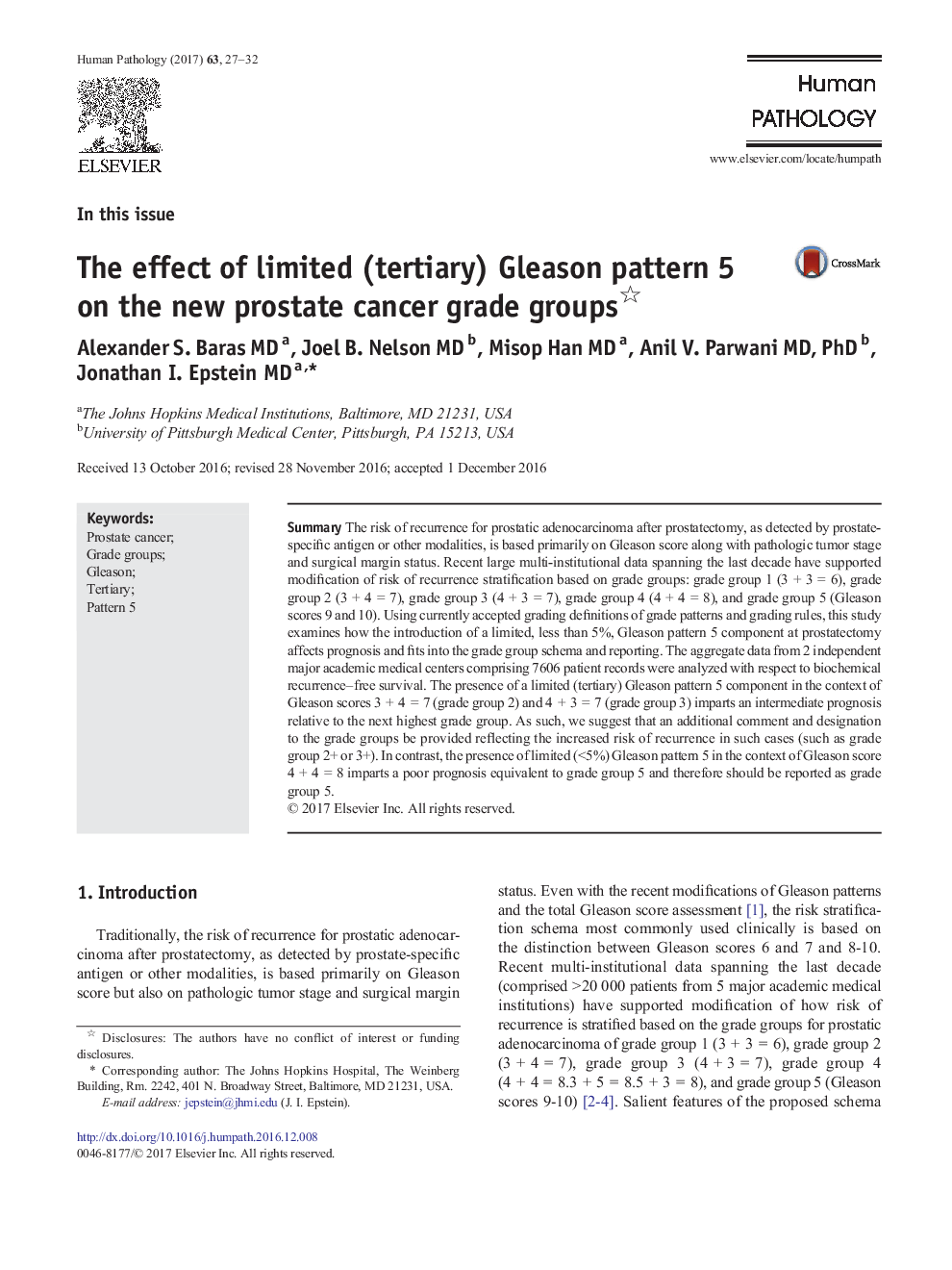| Article ID | Journal | Published Year | Pages | File Type |
|---|---|---|---|---|
| 5716387 | Human Pathology | 2017 | 6 Pages |
â¢Limited Gleason pattern 5 (L5) in the context of the prostate cancer grade groups.â¢L5 in grade groups 2 and 3 confers an increased risk of recurrence.â¢Gleason score 4 + 4 = 8 (grade group 4) with L5 equates to grade group 5.
SummaryThe risk of recurrence for prostatic adenocarcinoma after prostatectomy, as detected by prostate-specific antigen or other modalities, is based primarily on Gleason score along with pathologic tumor stage and surgical margin status. Recent large multi-institutional data spanning the last decade have supported modification of risk of recurrence stratification based on grade groups: grade group 1 (3Â +Â 3Â =Â 6), grade group 2 (3Â +Â 4Â =Â 7), grade group 3 (4Â +Â 3Â =Â 7), grade group 4 (4Â +Â 4Â =Â 8), and grade group 5 (Gleason scores 9 and 10). Using currently accepted grading definitions of grade patterns and grading rules, this study examines how the introduction of a limited, less than 5%, Gleason pattern 5 component at prostatectomy affects prognosis and fits into the grade group schema and reporting. The aggregate data from 2 independent major academic medical centers comprising 7606 patient records were analyzed with respect to biochemical recurrence-free survival. The presence of a limited (tertiary) Gleason pattern 5 component in the context of Gleason scores 3Â +Â 4Â =Â 7 (grade group 2) and 4Â +Â 3Â =Â 7 (grade group 3) imparts an intermediate prognosis relative to the next highest grade group. As such, we suggest that an additional comment and designation to the grade groups be provided reflecting the increased risk of recurrence in such cases (such as grade group 2+ or 3+). In contrast, the presence of limited (<5%) Gleason pattern 5 in the context of Gleason score 4Â +Â 4Â =Â 8 imparts a poor prognosis equivalent to grade group 5 and therefore should be reported as grade group 5.
